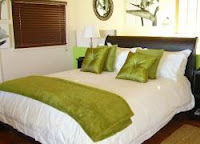Ongava Lodge
The well-established Ongava Lodge is situated in the
privately owned Ongava Game Reserve along the southern boundary of Etosha
National Park. Placed as it is close to the top of a hill in the foothills of
the Ondundozonanandana range, the vantage point is beautiful and overlooks a
well-frequented waterhole and the plains beyond.
Ongava Lodge offers luxury accommodation in 14
rock-and-thatch en-suite chalets. There are impressive views over the camp’s
waterhole from the main lounge and dining areas and there is also an inviting
pool to cool off in the heat of the day. Meals are either served in the main
dining area under thatch or on the dining deck under the stars.
Activities include game drives into Etosha, spending time in
the camp hide, and nature drives and walks on the reserve. Ongava has resident
white and black rhino, giving guests staying at Ongava the opportunity to see
both species.
Little Ongava
Little Ongava is perched on the crest of a hill commanding
magnificent vistas of the plains stretching for miles to the horizon, offering
an extraordinary experience as the focal point of an Etosha journey.
This intimate camp has only three spacious suites each with
its own plunge pool, en-suite bathroom, “sala”, and outdoor shower. The lounge
and dining areas have wonderful views of a productive waterhole below the camp,
the open deck allowing for relaxed, stylish dining under the African sky.
Guests at Little Ongava share a dedicated guide and vehicle, ensuring the best
possible nature experience at one of Africa’s great wildlife destinations. Day
and night wildlife-viewing drives, visiting hides overlooking waterholes, walks
and rhino tracking with experienced guides can all be enjoyed exclusively on
this reserve. Game drives and day trips into nearby Etosha National Park are
also offered.
Ongava tented Camp
The classic safari style camp is tucked in a hidden valley
at the foot of a dolomite hill in Ongava Game Reserve bordering Etosha National
Park.
Eight large comfortable Meru-style tents all have en-suite
facilities, open air showers and private verandas; the family unit sleeps four.
The main area, built of stone, canvas and thatch, fronts onto a much-frequented
waterhole; watching wildlife coming to drink from here or from the swimming
pool is a favourite pastime.
Ongava’s proximity to Etosha allows for game drives in the
Etosha National Park and on the Ongava Reserve itself. Other possibilities
include guided walks, birding and visiting hides. Ongava holds one of the
largest rhino custodianships for the Namibian government in the country and is
one of the few private game reserves in southern Africa where guests can see
both black and white rhino.
Andersson's Camp
Nestled in mopane scrub on white calcrete soils, Andersson’s
Camp is situated 4.5 km from Etosha’s Andersson Gate. The camp was named after
Swedish explorer Charles Andersson – one of the first Europeans to “discover”
Etosha, Africa’s largest saltpan.
The resurrected former farmstead that stands on the site now
forms the centre of a charming camp fronting onto a productive waterhole. The
18 tented en-suite units (including two family suites) are raised on decks. The
camp is an exciting example of sustainable construction; this model of
eco-sensitive lodging provides an authentic, safe and down-to-earth experience
for small groups, families and independent travellers to the Etosha region and
is easily accessible by either road or air.
Activities include morning and/or afternoon game drives in
Etosha National Park, and morning and afternoon/evening drives (on request in
camp) and nature walks on Ongava Reserve. The sunken hide at the waterhole in
front of camp is an excellent place from which to watch wildlife coming down to
drink.
Ongava Wildlife

























































